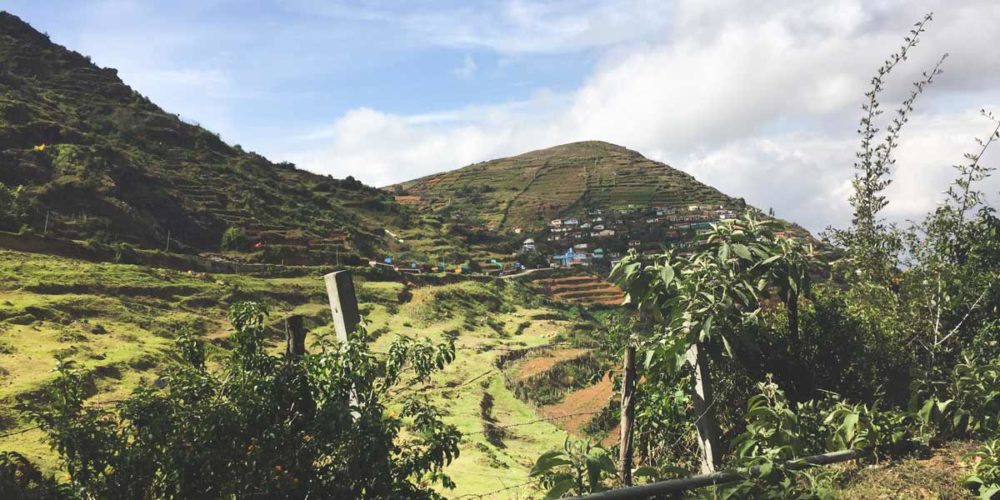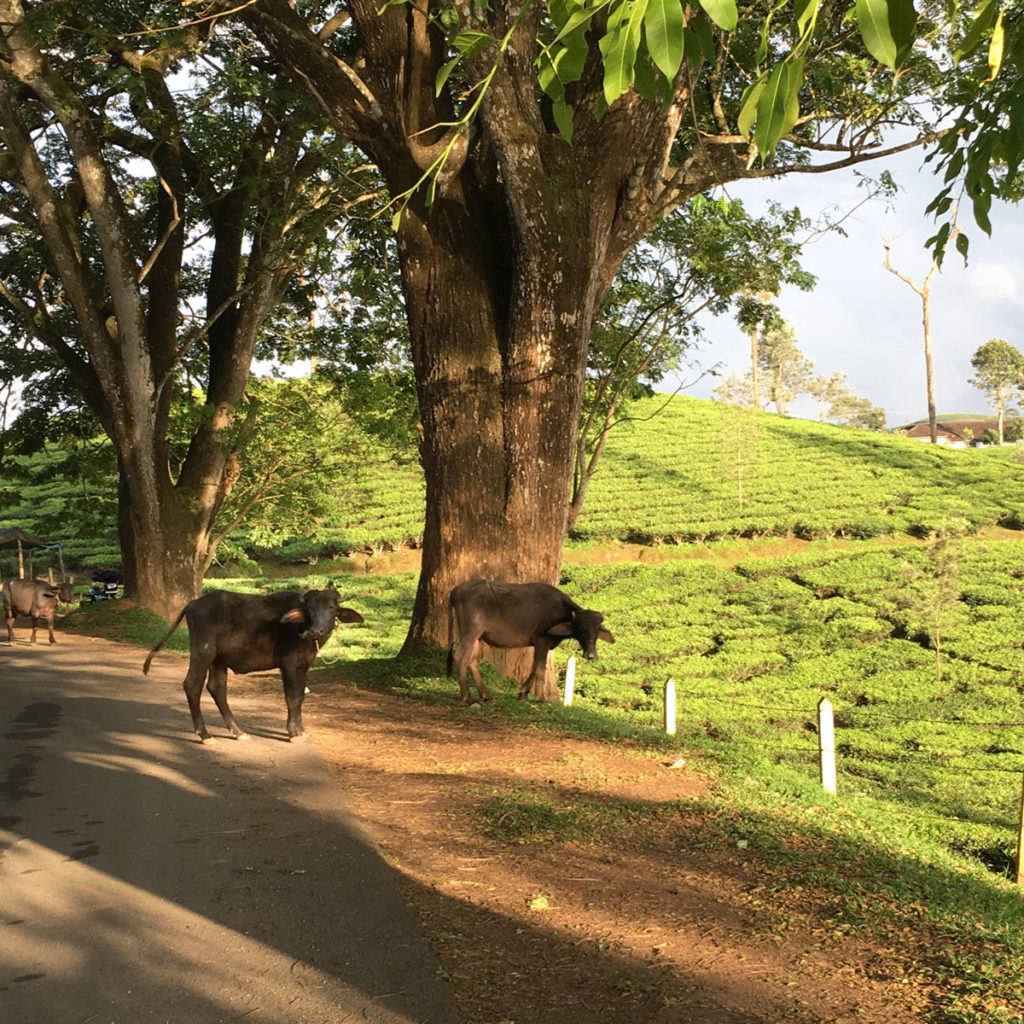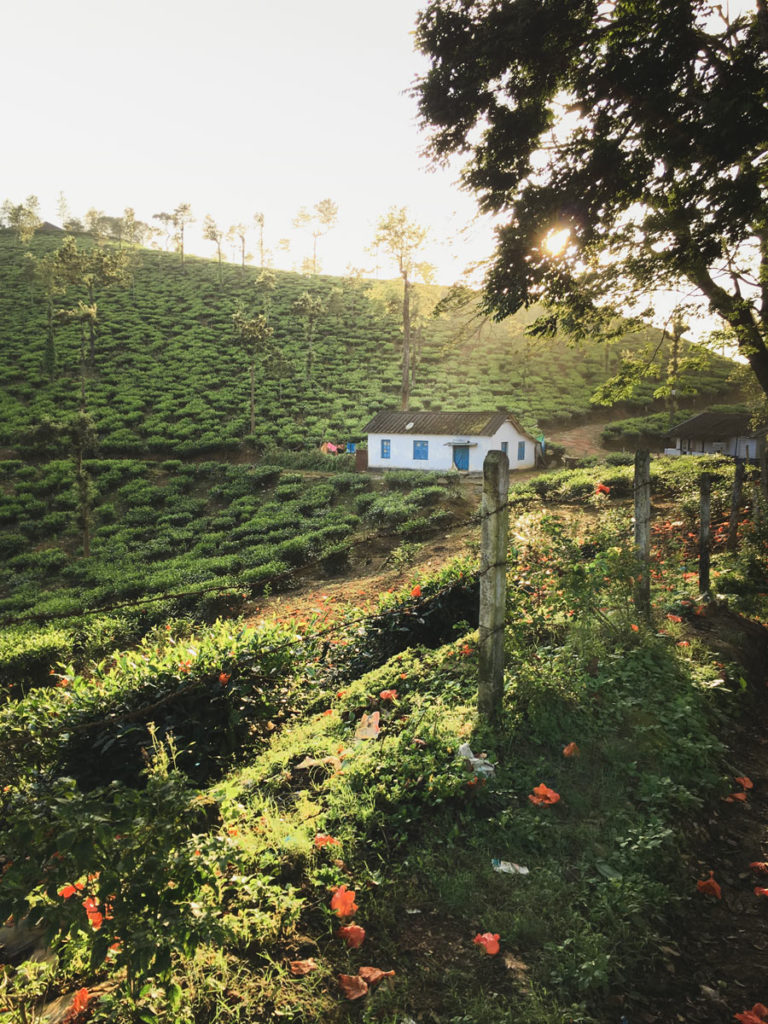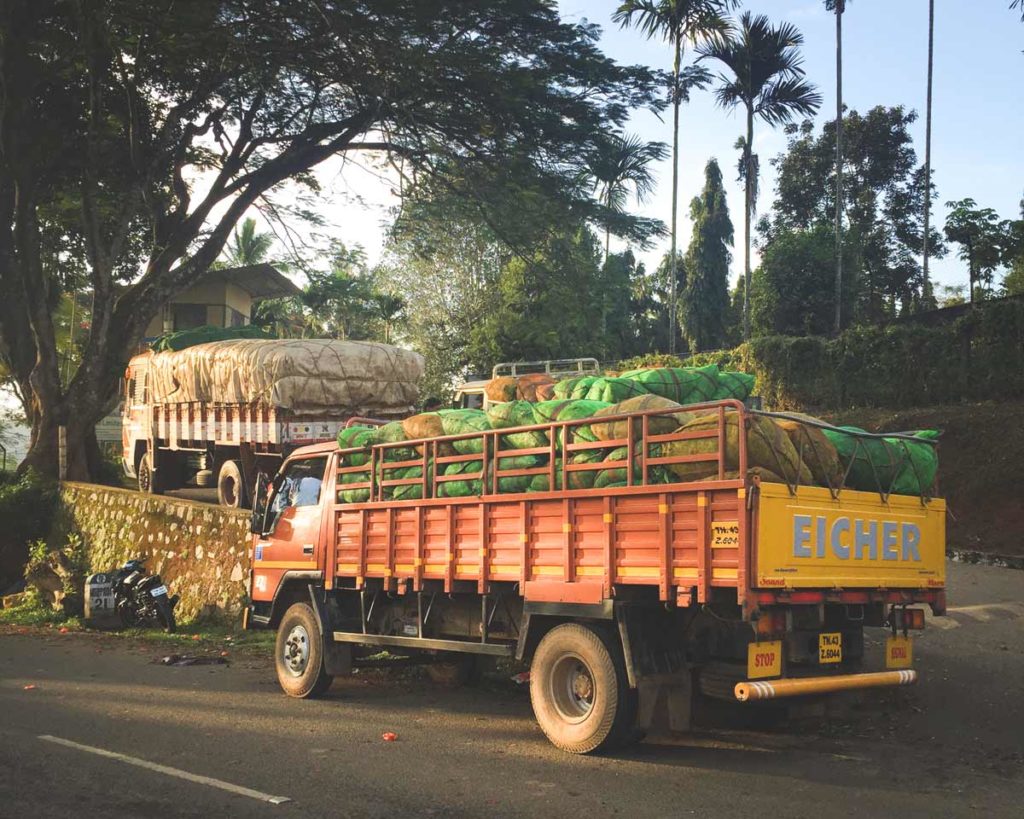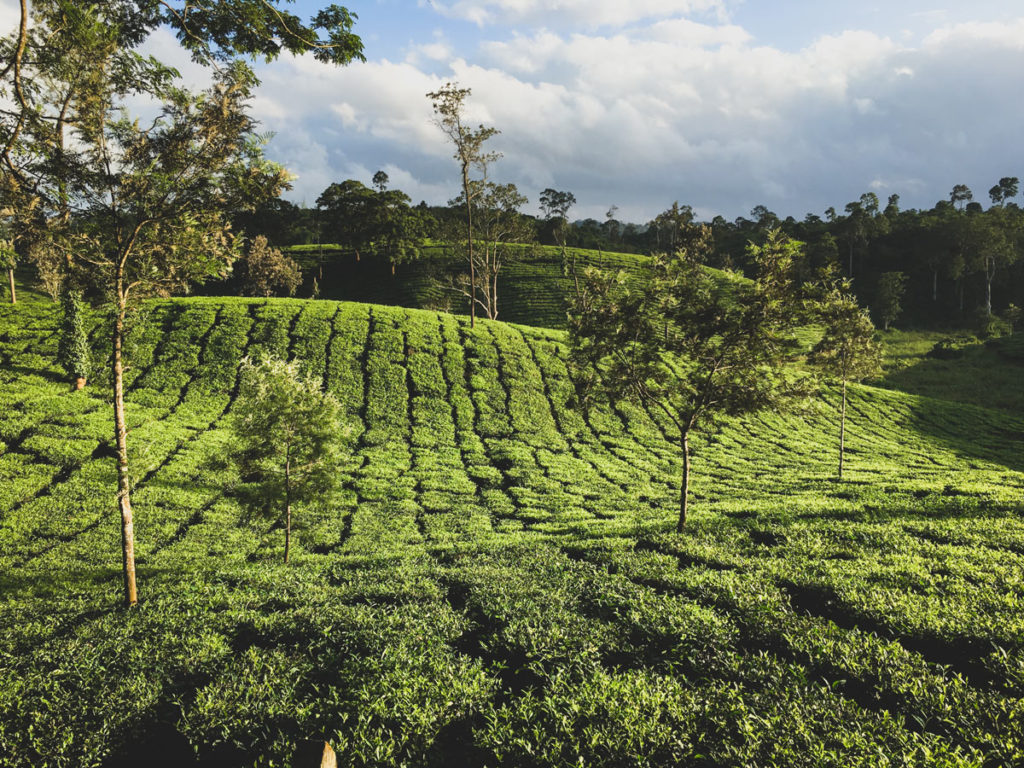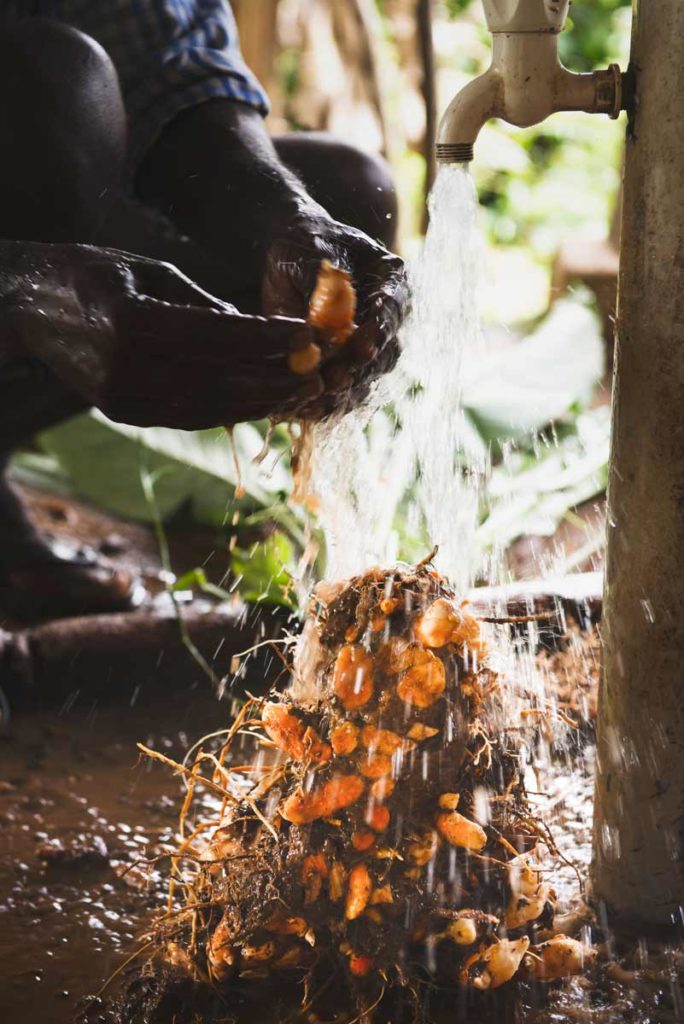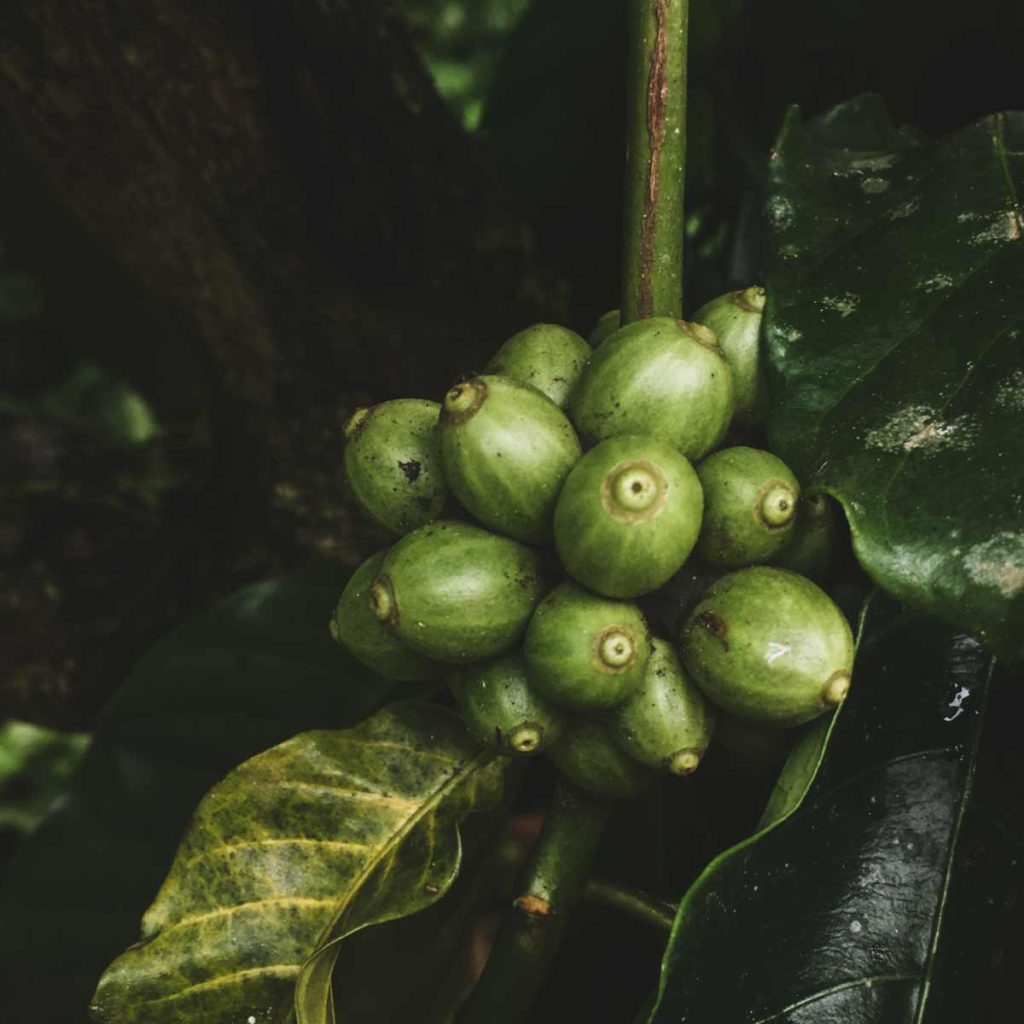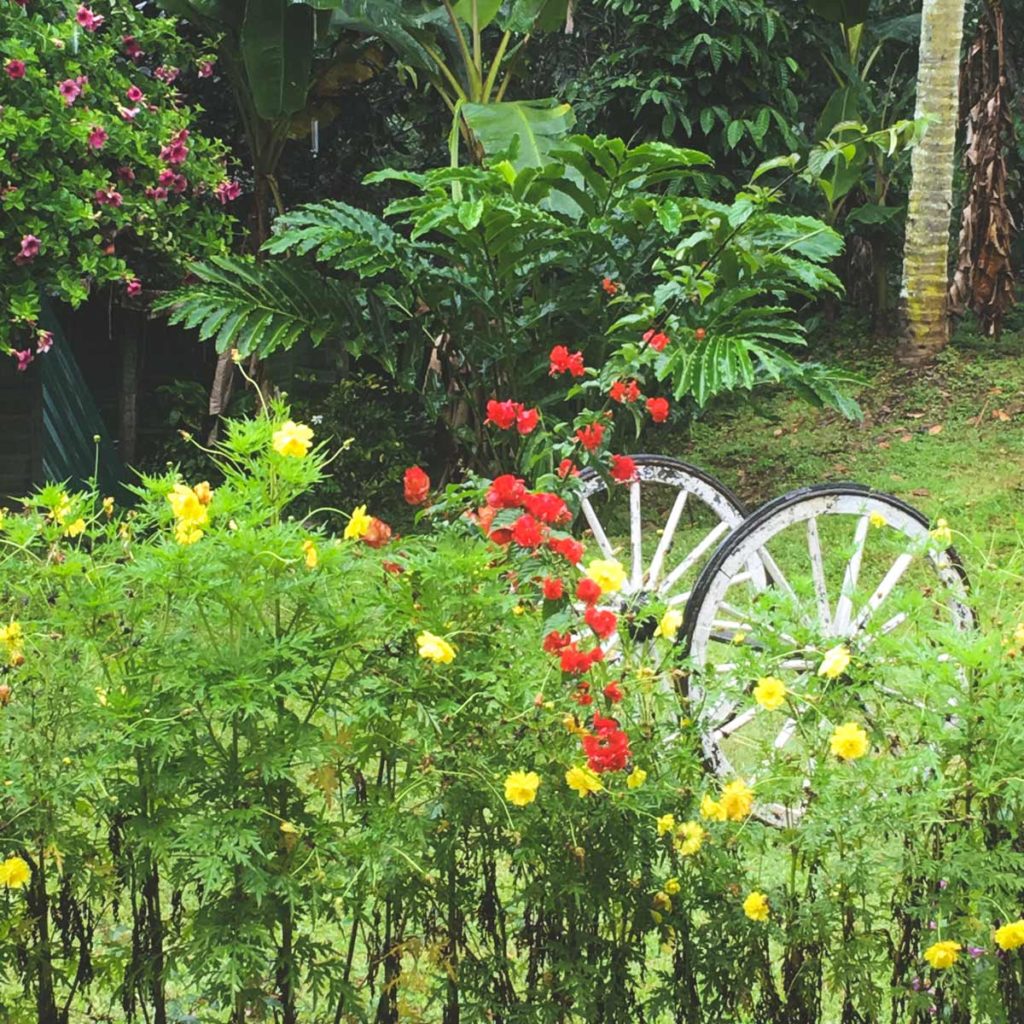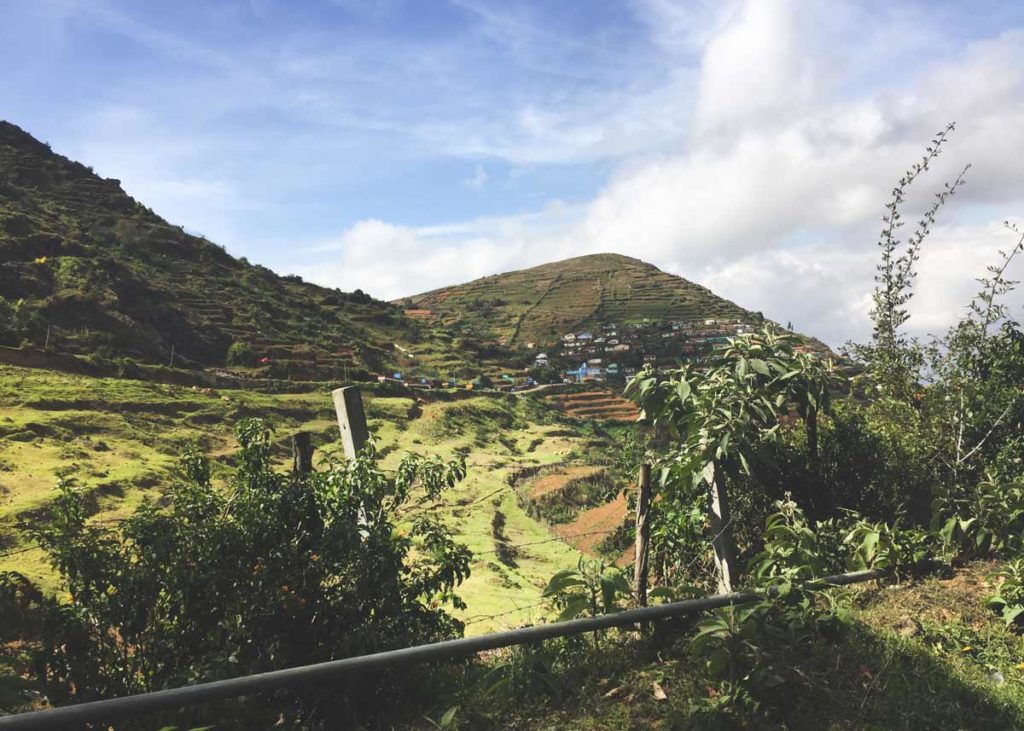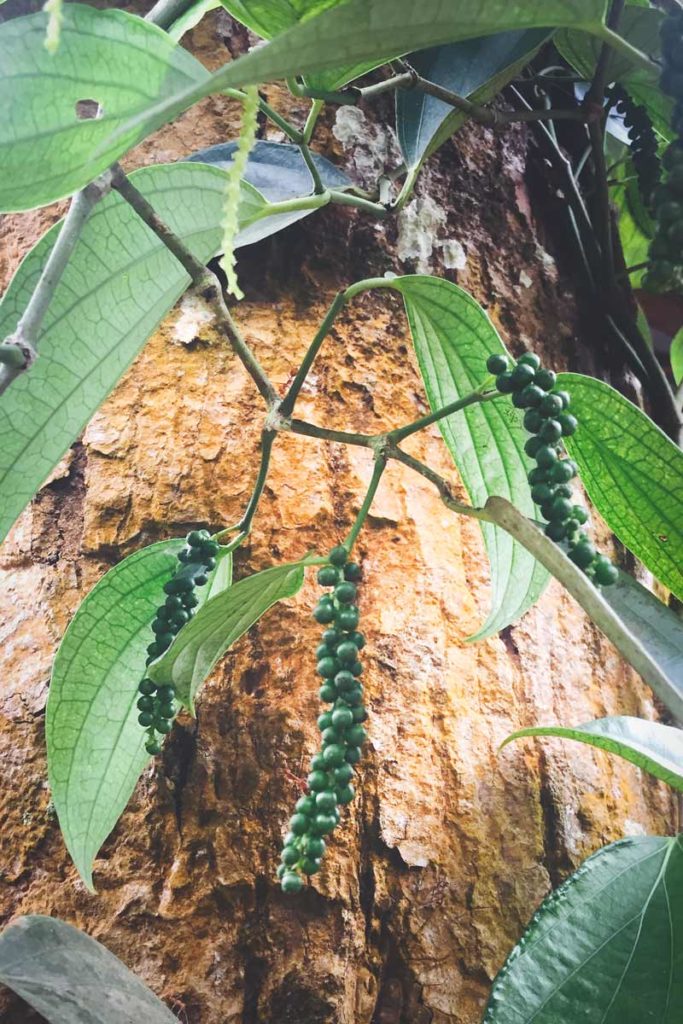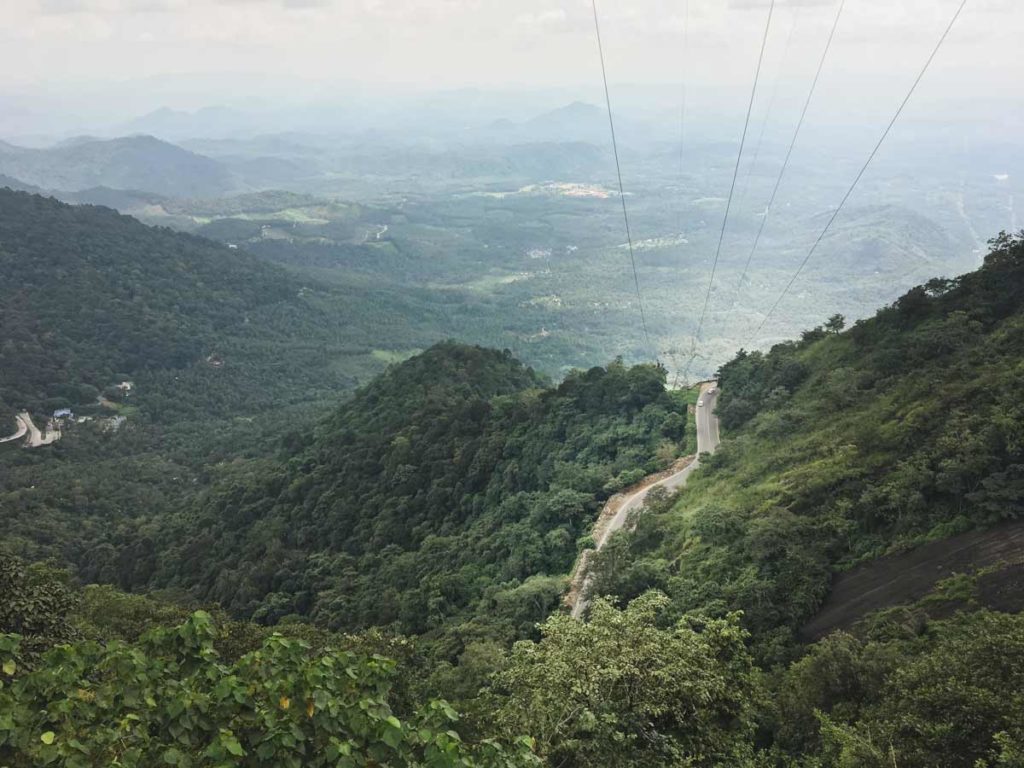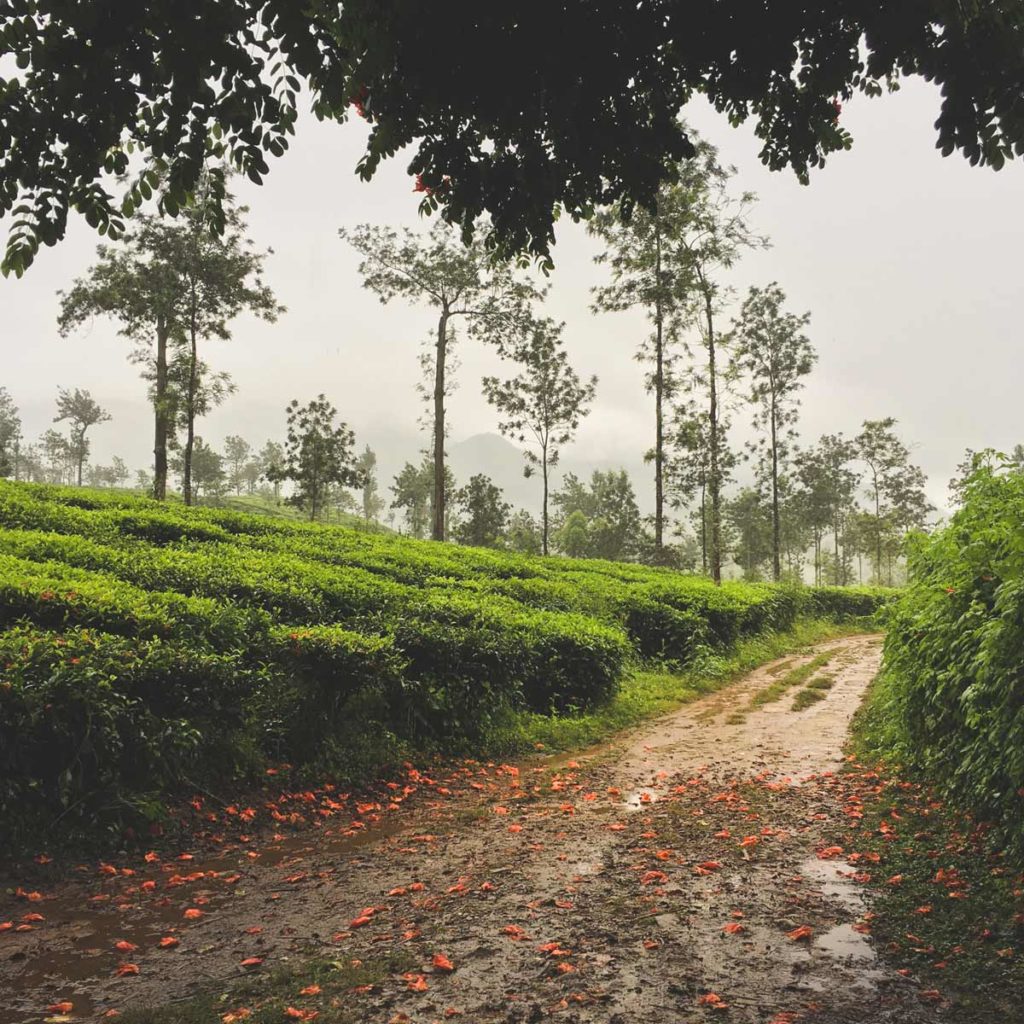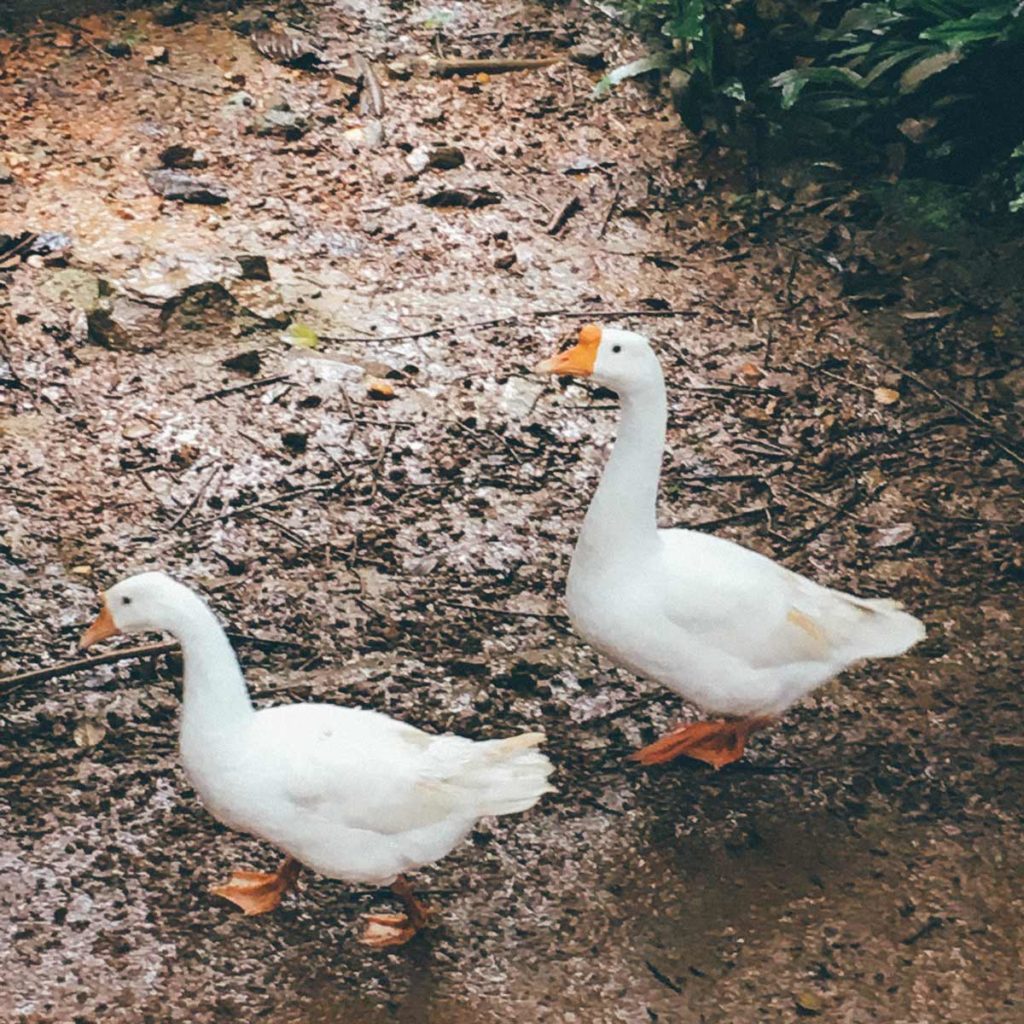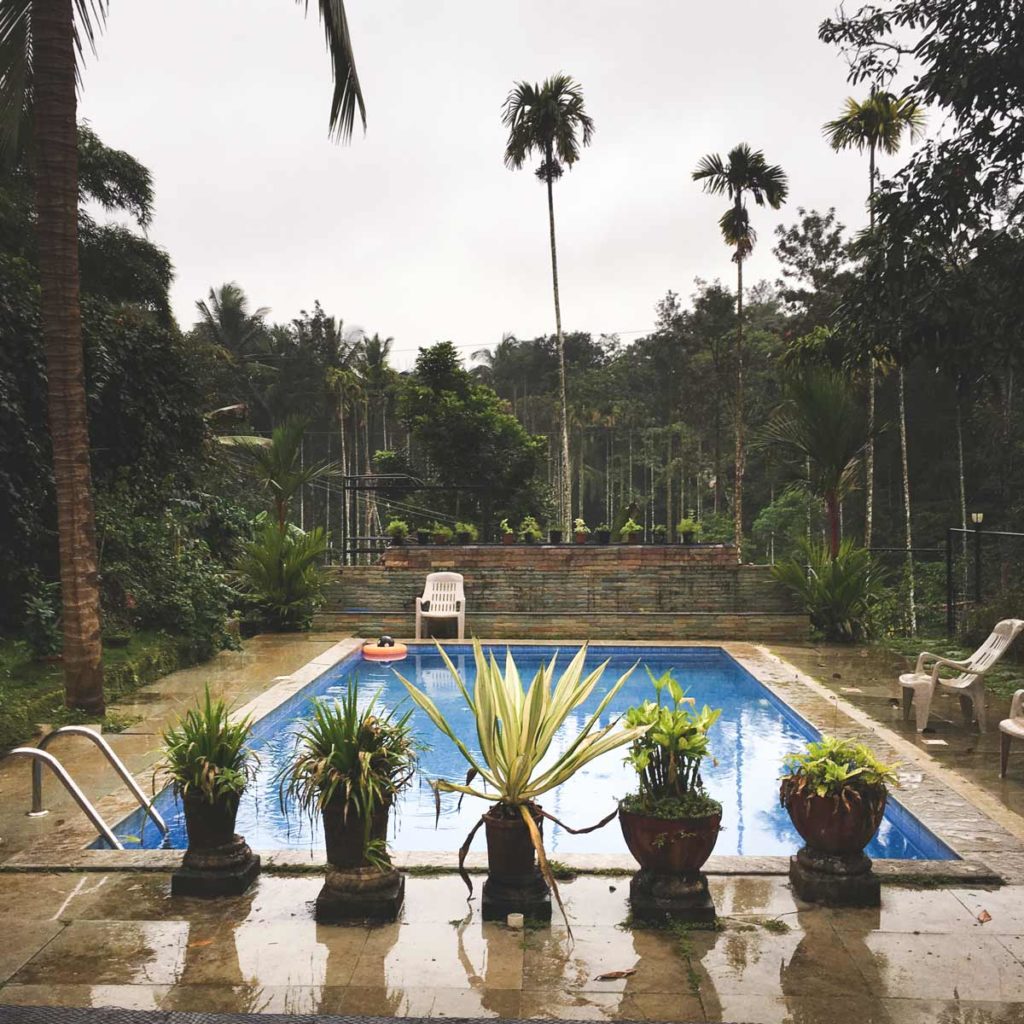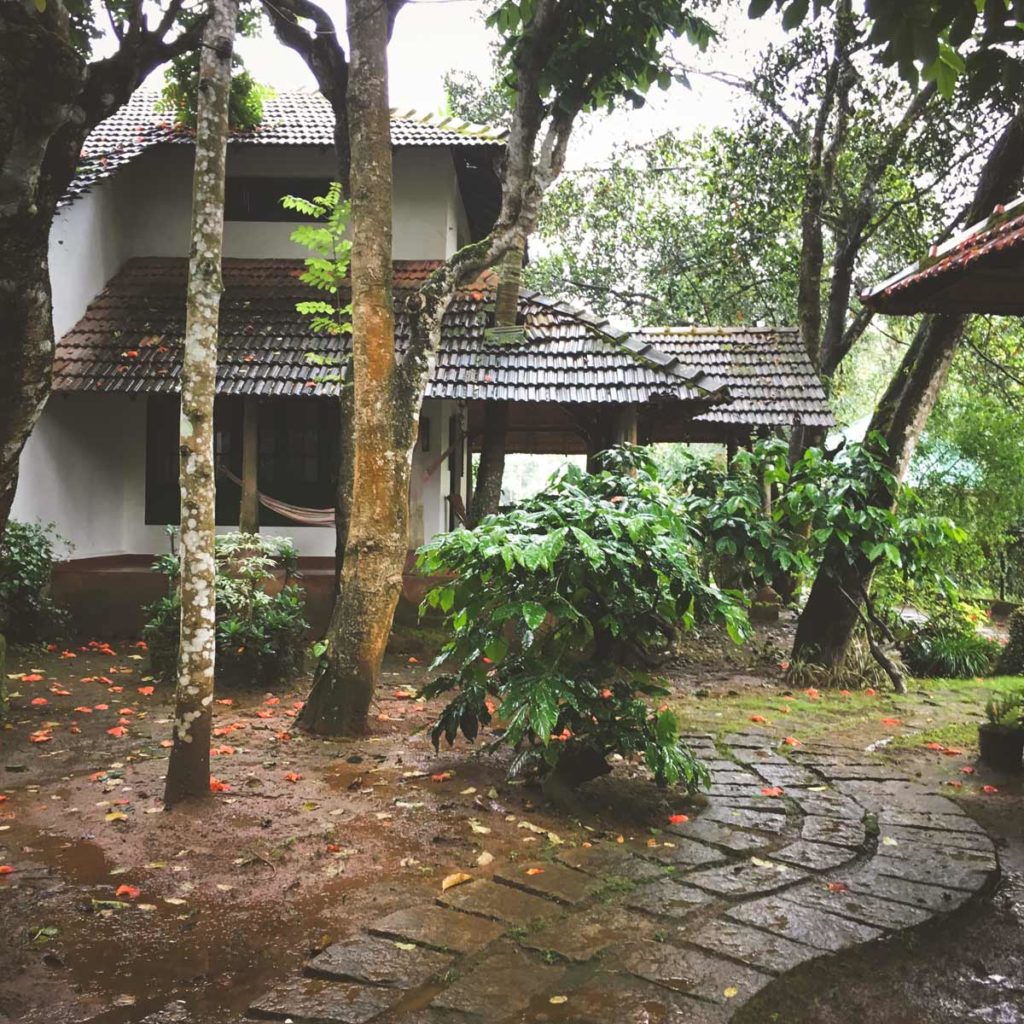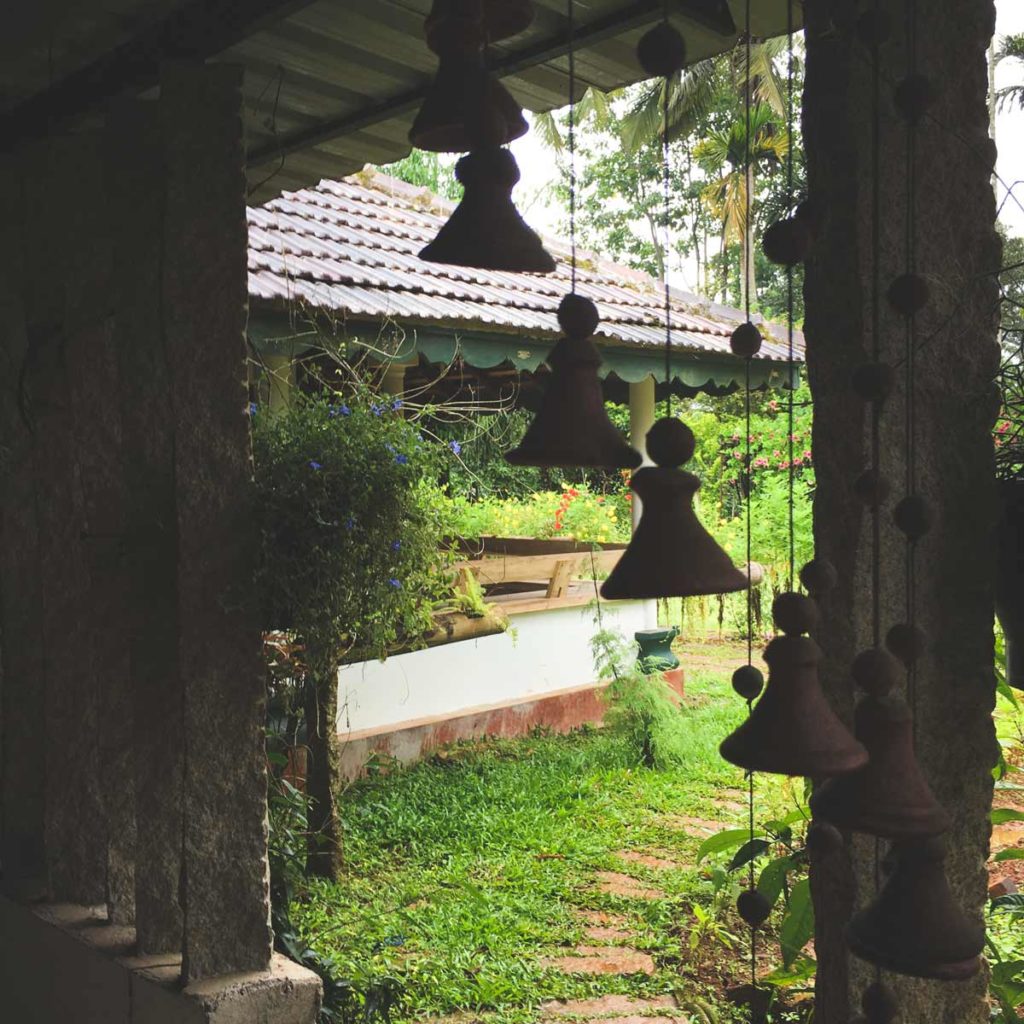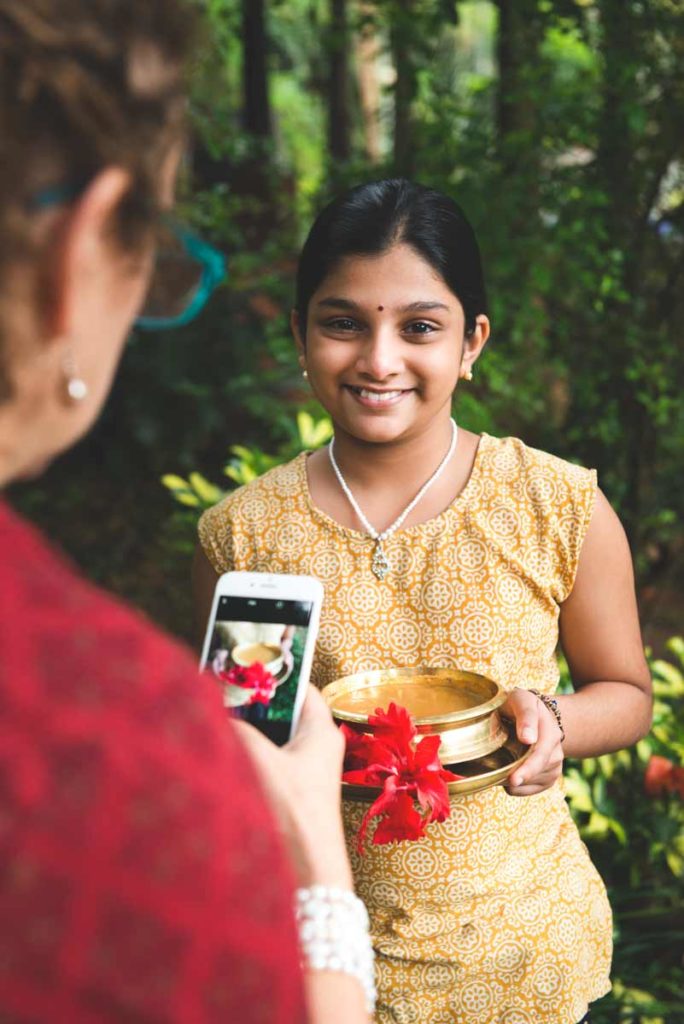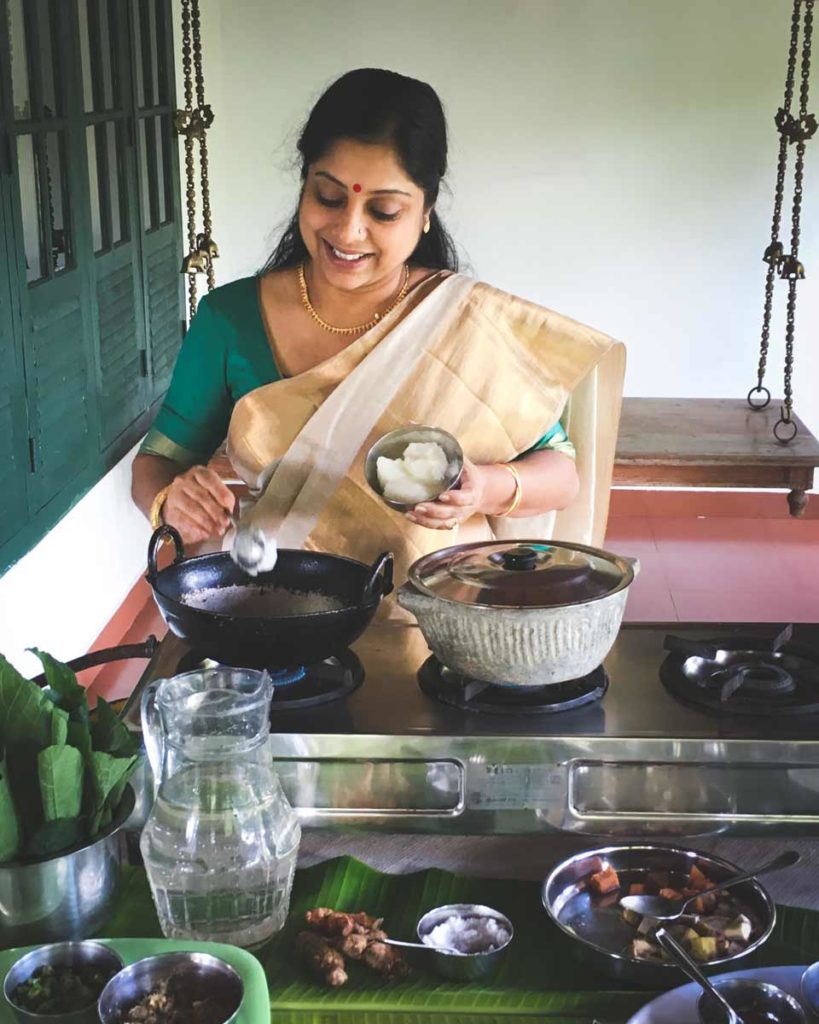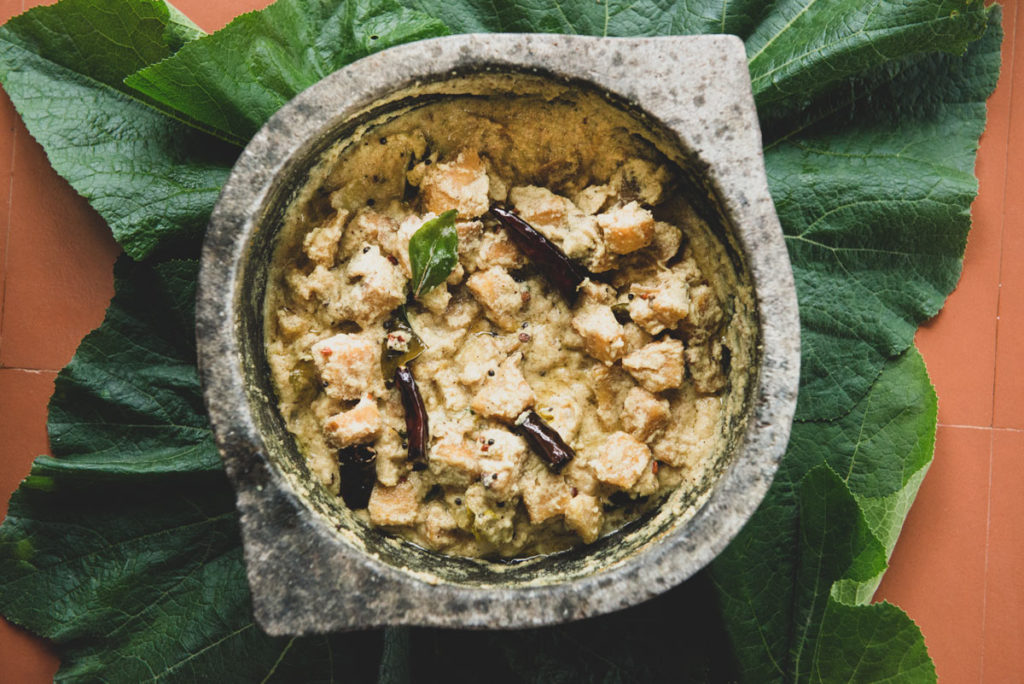Just as the sun lowered from the clear blue sky to kiss the red earth below, we arrived in Wayanad District. Pulling the car to the side of the road on a hilltop, we got out just to take in the scene surrounding us.
A few water buffalo sauntered by enjoying the cool of day’s end here at 2000 meters above sea level. Low-hanging trees stood like sentinels along the bend in the highway. Lorries loaded with sacks of tea leaves lined a steep hill behind us. Quietly the drivers waited for their turn to unload the day’s pickings at the local tea factory.
In between bird calls, silence joined us to a golden embrace of light. Before us, hanging there between the heaven of blue above and fecund earth below, lie a blanket of green so bright it seemed to vibrate. It was tea trees, as far as the eye could see and they were positively glistening. Their expanse dwarfed what we’d seen in Ooty. Awestruck by the effortless growth around us, we merged with life’s rhythm and stayed until the last of the rays turned to a fading pink blush.
This is a place for growing things
What grows here? The word Wayanad translates to “land of paddy fields.” Two kinds of rice grow here – Wayanad Jeerakasala rice and Wayanad Gandhakasala rice.
But that’s not all. Coffee, cocoa, pepper, plantains, vanilla, coconut, cardamom, ginger, and bananas also flourish.
Bordering Karnataka to the north and Tamil Nadu to the east, this land-locked region of Kerala is high in the Western Ghats. One of the most northern and least populated areas in the state, Wayanad is a district with no main city and only a few small towns.
Tribal people still live in mud huts, close to the land and in touch with its life. The beaches of Kozhikode (Calicut) lie 65 kilometers to the west. And, while Wayanad might not have beaches, it does not lack water.
Water is plentiful here
We trundled past a plethora of rivers, streams and waterfalls on our drive. And, if we’d wondered about the origins of all this water, the next morning as if on cue, it began raining and did not let up until late evening.
Water is life and the life around us inhaled the day’s deluge. It took it in and breathed it out in whispers of clouds that hung low on the hills around us. The leaves in the garden of The Turmerica, the homestay we were visiting, sparkled in the light of the rain’s wet kiss.
We came to Wayanad to enjoy cooking lessons with The Turmerica’s proprietor, Ranjini Menon. Our schedule did not allow for much more exploration but you can learn from our experience and plan to stay longer on your own time here. There are lots of things to do in Wayanad. Especially for those that love trekking and nature.
Many consider Wayanad the most beautiful district in Kerala. No wonder. The Nilgiri Biosphere Reserve is nearby, the altitude keeps it cool and there’s an abundance of produce. With it’s proximity to Khozikode’s airport, we hope you’ll venture to this Eden when you plan your own road trip to South India.
________
During this period of COVID-19, we are happy to offer our blog as a form of armchair travel. When it is safe to travel again, we sincerely hope you’ll venture forth and experience all these wonderful Faces, Places and Plates for yourself! – Karen and Pauli-Ann.

Gratitude
Thank you to the KTM Society and Travel XS for sponsoring our travel throughout South India in 2016.
All words and photos are our own and were not shared with the sponsors before publication.

